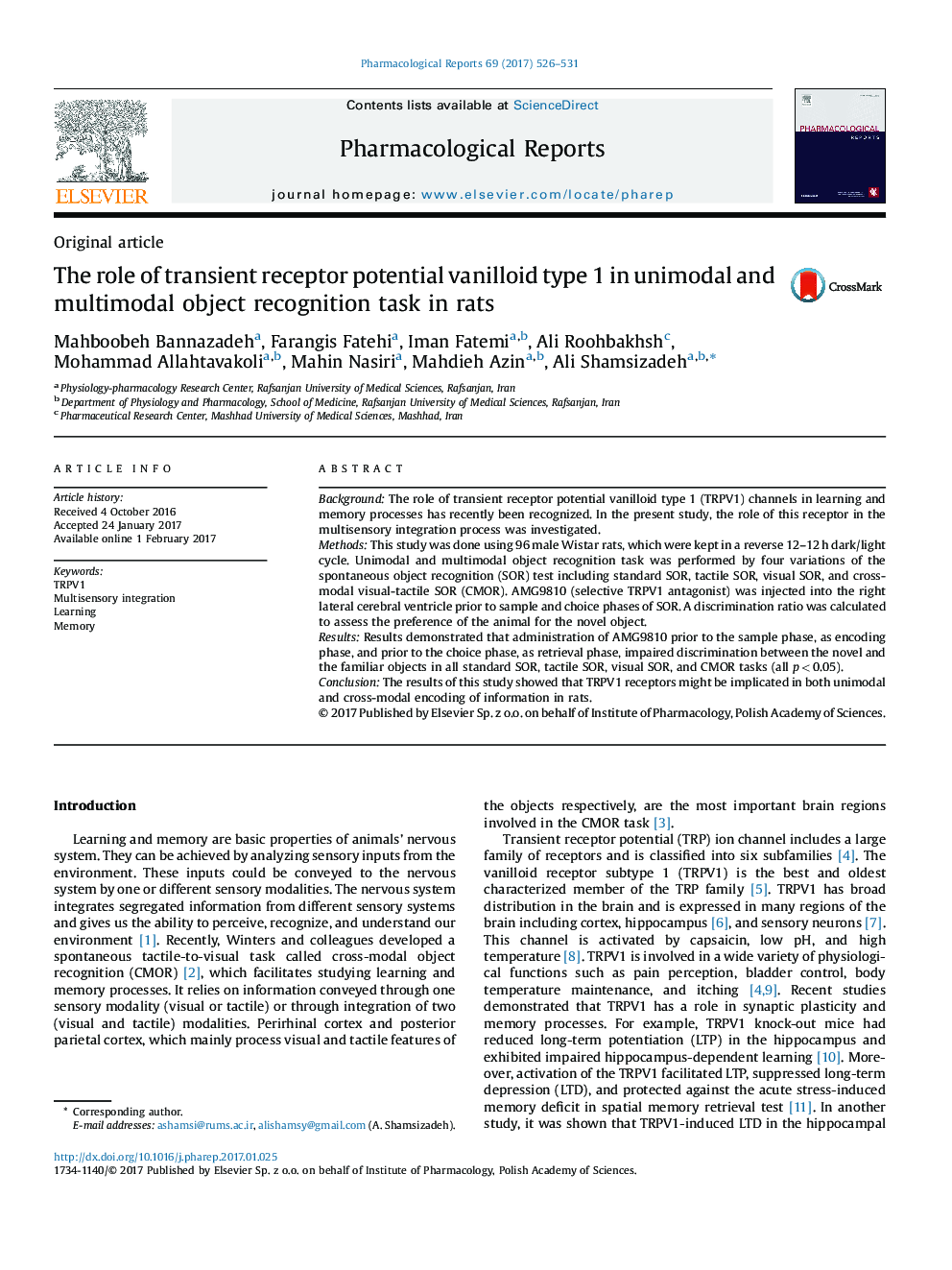| Article ID | Journal | Published Year | Pages | File Type |
|---|---|---|---|---|
| 5515079 | Pharmacological Reports | 2017 | 6 Pages |
â¢Administration of TRPV1 antagonist impaired unimodal tactile and visual SOR.â¢Administration of TRPV1 antagonist impaired CMOR behavior in rats.â¢TRPV1 may involve in both unimodal and cross-modal encoding of information in rats.
BackgroundThe role of transient receptor potential vanilloid type 1 (TRPV1) channels in learning and memory processes has recently been recognized. In the present study, the role of this receptor in the multisensory integration process was investigated.MethodsThis study was done using 96 male Wistar rats, which were kept in a reverse 12-12 h dark/light cycle. Unimodal and multimodal object recognition task was performed by four variations of the spontaneous object recognition (SOR) test including standard SOR, tactile SOR, visual SOR, and cross-modal visual-tactile SOR (CMOR). AMG9810 (selective TRPV1 antagonist) was injected into the right lateral cerebral ventricle prior to sample and choice phases of SOR. A discrimination ratio was calculated to assess the preference of the animal for the novel object.ResultsResults demonstrated that administration of AMG9810 prior to the sample phase, as encoding phase, and prior to the choice phase, as retrieval phase, impaired discrimination between the novel and the familiar objects in all standard SOR, tactile SOR, visual SOR, and CMOR tasks (all p < 0.05).ConclusionThe results of this study showed that TRPV1 receptors might be implicated in both unimodal and cross-modal encoding of information in rats.
